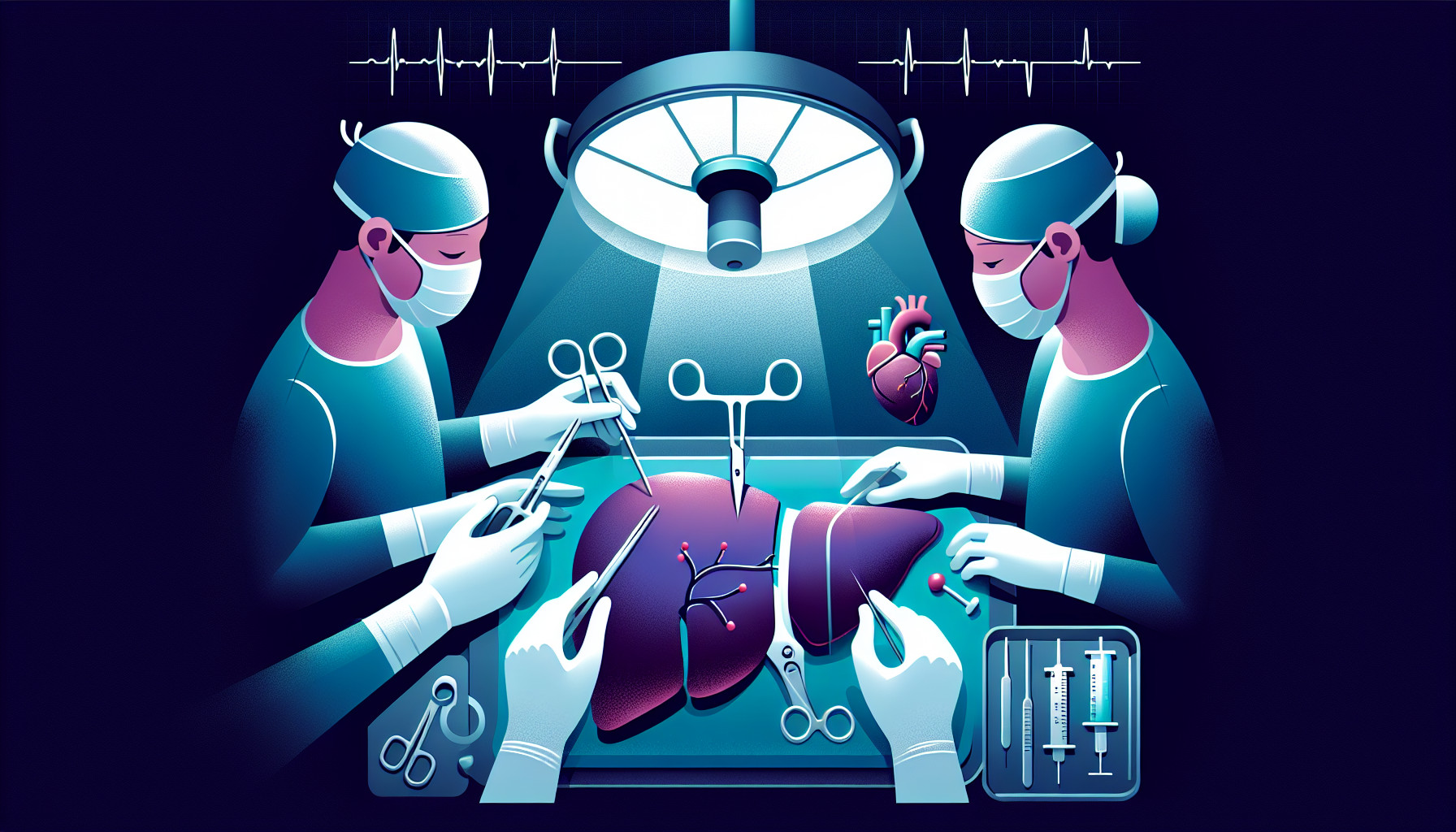Our Summary
This research paper investigates how we choose who gets a liver transplant in the United States. At the moment, the selection process is designed to benefit the community of people needing a liver as a whole. This is because most liver transplants come from people who have died, and there are not enough to go around. However, this system might not be fair for people who have a living donor willing to give them part of their liver, which currently makes up less than 5% of liver transplants. The researchers suggest that these people should be assessed based on their specific disease, rather than the current principle of maximum benefit for the whole community. This could potentially improve survival rates for those with certain diseases where a liver transplant is the only cure.
FAQs
- How is the selection process for liver transplants currently designed in the United States?
- What is the suggested change in the selection process for people who have a living donor for a liver transplant?
- Could changing the selection process potentially improve survival rates for certain diseases?
Doctor’s Tip
A doctor might tell a patient about liver transplant that it is important to follow a healthy lifestyle post-transplant to ensure the success of the new liver. This includes maintaining a balanced diet, avoiding alcohol and tobacco, and staying physically active. It is also important to take all prescribed medications as directed and attend regular follow-up appointments with your healthcare team. By taking care of your new liver, you can increase the chances of a successful transplant and improve your overall quality of life.
Suitable For
Typically, patients who are recommended for a liver transplant are those who have end-stage liver disease or liver failure, and have exhausted all other treatment options. Common indications for liver transplant include:
Cirrhosis: Patients with cirrhosis, which is scarring of the liver tissue, may require a liver transplant if their condition is severe and causing complications such as liver failure, portal hypertension, or liver cancer.
Acute liver failure: Patients who experience sudden and severe liver dysfunction, often due to viral hepatitis, drug toxicity, or other causes, may need a liver transplant to survive.
Hepatocellular carcinoma (liver cancer): Patients with liver cancer that is confined to the liver and meets specific criteria may be recommended for a liver transplant as a potential curative treatment.
Genetic liver diseases: Patients with inherited liver diseases such as hemochromatosis, Wilson’s disease, alpha-1 antitrypsin deficiency, or primary biliary cholangitis may require a liver transplant if their condition progresses to end-stage liver disease.
Autoimmune liver diseases: Patients with autoimmune hepatitis, primary sclerosing cholangitis, or primary biliary cholangitis that do not respond to medical therapy may be candidates for a liver transplant.
Alcoholic liver disease: Patients with severe alcoholic liver disease that has led to cirrhosis and liver failure may be considered for a liver transplant if they meet specific criteria, including abstinence from alcohol for a certain period of time.
Non-alcoholic fatty liver disease: Patients with non-alcoholic steatohepatitis (NASH) or non-alcoholic fatty liver disease (NAFLD) that progresses to cirrhosis and liver failure may be recommended for a liver transplant.
Overall, the decision to recommend a liver transplant is based on the severity of the patient’s liver disease, their overall health, and their likelihood of benefiting from the transplant. Transplant centers evaluate each patient individually to determine if they meet the criteria for a liver transplant and are likely to have a successful outcome.
Timeline
Before liver transplant:
- Patient is diagnosed with end-stage liver disease or liver failure.
- Patient undergoes extensive medical evaluations to determine if they are a suitable candidate for a liver transplant.
- Patient is placed on the transplant waiting list and waits for a suitable donor liver to become available.
After liver transplant:
- Patient undergoes the liver transplant surgery, which involves removing the diseased liver and replacing it with a healthy donor liver.
- Patient is closely monitored in the hospital for complications and to ensure the new liver is functioning properly.
- Patient is discharged from the hospital and continues to be monitored closely by medical professionals.
- Patient must take immunosuppressant medications for the rest of their life to prevent rejection of the new liver.
- Patient undergoes regular follow-up appointments and medical tests to monitor the health of the new liver and overall well-being.
What to Ask Your Doctor
- What criteria do you use to determine if I am a candidate for a liver transplant?
- How long is the waiting list for a liver transplant, and what factors may affect how long I have to wait?
- What are the risks and potential complications associated with a liver transplant?
- How will my quality of life be affected after a liver transplant?
- What is the success rate of liver transplants at this hospital or transplant center?
- What is the recovery process like after a liver transplant?
- How will I need to adjust my lifestyle or make changes to my diet and medications post-transplant?
- Are there any alternative treatment options to consider before pursuing a liver transplant?
- How often will I need to follow up with my transplant team after the procedure?
- What support resources are available to me and my family throughout the transplant process?
Reference
Authors: Kwon YK, Etesami K, Genyk Y. Journal: Curr Opin Organ Transplant. 2020 Feb;25(1):47-51. doi: 10.1097/MOT.0000000000000728. PMID: 31834006
